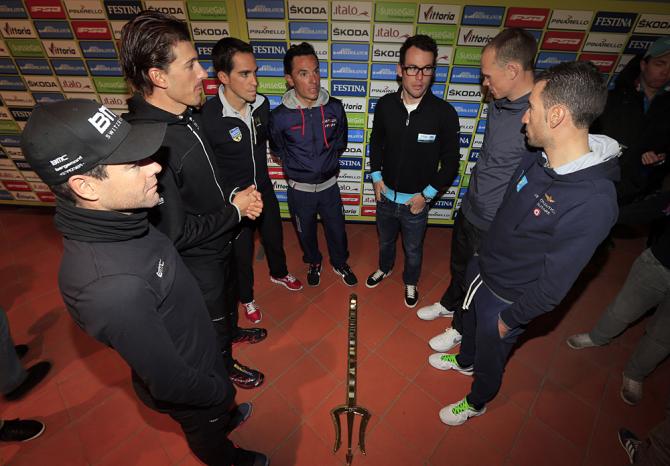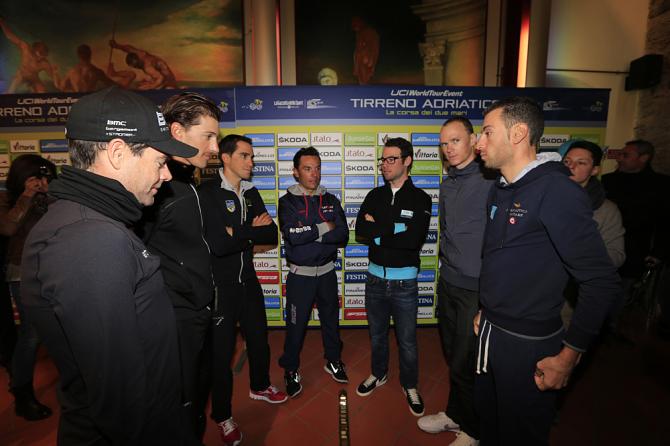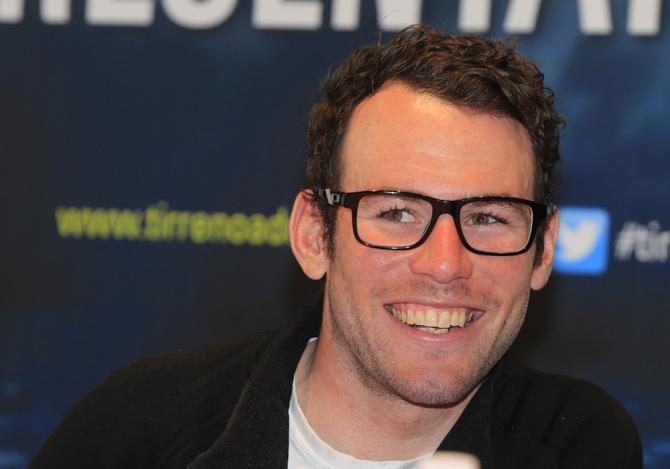Sanremo hopefuls tune up in Tirreno-Adriatico
Contador, Nibali Froome, Sagan and Cavendish headline






















Tirreno-Adriatico is known as ‘The Race of the Two Seas’ due to its snaking path between the Tyrrhenian coast in Italy’s west and the Adriatic coast in the east, and it shares space in the calendar with Paris-Nice. For years the organisers of the two races, RCS Sport and ASO respectively, have jostled each other for the attentions of the world’s best riders.
But while both are important races in their own right, like many events on the calendar they are used as primers for more prestigious targets down the road, which in this case is Milano-Sanremo. Held the following weekend, it’s the first Monument of the season and it’s the race on which sprinters and strongmen everywhere have their eyes well and truly fixed.
According to both tradition and recent history, those finishing Tirreno-Adriatico are the ones with an edge by the time ‘La Classica di Primavera’ rolls around in Italy’s second city. Fabian Cancellara won the stage 5 time trial in 2008 before triumphing in Sanremo while Mark Cavendish won the final stage in 2009 prior to succeeding Cancellara. In fact, eight of the 12 riders to have stood on the podium in Sanremo since 2009 have concluded their build-up on the Adriatic.
Why is this the case? Better weather and a tradition of long, hilly sprint stages are two obvious factors. But more crucial is the scheduling – since the WorldTour began in 2009, Tirreno-Adriatico has finished two days later than Paris-Nice, allowing riders to arrive in Milan in a better racing groove.
However, for 2013 Milano-Sanremo has been moved back a day to Sunday, perhaps taking the edge off this advantage. It was a decision lambasted by Cancellara, who wrote on Twitter, “I do not like that Milano-Sanremo will change from Saturday to Sunday.... #JustLeaveItHowItWas. [Now] tirreno-adriatico must be one day later, too.”
Historically, a mixture of rouleurs and GC contenders have held aloft the Neptune’s Trident trophy – Tirreno’s unique, golden fork handed to the winner that’s named after the Roman god of water and the sea.
Belgian Classics legend Roger De Vlaeminck won it a record six times, all on the bounce between ’72 and ’77, while Giro d’Italia winners Francesco Moser and Tony Rominger both have a brace of victories to their name. Since Cancellara’s 2008 triumph the balance of the parcours has shifted back towards the climbers, with Michele Scarponi winning in 2009, Cadel Evans taking the race in 2011 and last year’s winner Vincenzo Nibali satisfying RCS Sport’s aim of boosting the race’s profile to attract more riders and fans. It’s a formula the organisers have employed again for 2013 and in doing so, they have attracted the likes of Nibali, Alberto Contador, Chris Froome, Cadel Evans, Mark Cavendish and Peter Sagan.
The latest race content, interviews, features, reviews and expert buying guides, direct to your inbox!
For the third year in a row, the racing begins with a team time trial and the small coastal town of San Vincenzo, Tuscany again plays host with a 16.9km test to Donoratico. At 1,060km across seven stages, the 46th edition is the shortest in terms of distance since the six-stage race of 1988 but that’s mostly due to short time trials book-ending the event. Sprinters looking to hone their form and lead-out trains will contest the flat terrain of stage 2 to Indicatore and stage 3 to Narni Scalo, while the first big selection will be made on stage 4’s 173km passage to the Prato di Tivo in the Abruzzo mountains.
Last year’s race saw Nibali win alone on the Prato di Tivo and in this year’s event it could again prove selective in the battle for the overall. Though the altitude tops out at 1,450m, it’s still early March so snow-lined roads can be expected. Stage 5 from Ortona to Chieti could be the decisive day.
A huge 230km of racing is punctuated by two substantial climbs, including the 1,319m Passo Lanciano, which peaks 40km from the finish. If the overall contenders are all still together, the two sharp ramps into Chieti will provide opportunities to attack.
There’s no let up on stage 6, either. It starts and finishes in the Adriatic coastal town of Porto Sant’Elpidio. Its 209km begins with rolling hills, followed by the coastal capi (short hills) and a flat run-in to the finish – as close as you’ll ever find to a dress rehearsal of Milano-Sanremo.
If those tough road stages don’t decide a winner, the 9.2km individual time trial in the traditional finish in San Benedetto del Tronto, certainly will. Last year, ninth place on the day was enough for Nibali as he overhauled blue jersey Chris Horner to take the title by a slender margin of 14 seconds. It was the finish organisers had hoped for when they first introduced the final TT in 2011 and a repeat would be warmly welcomed.
